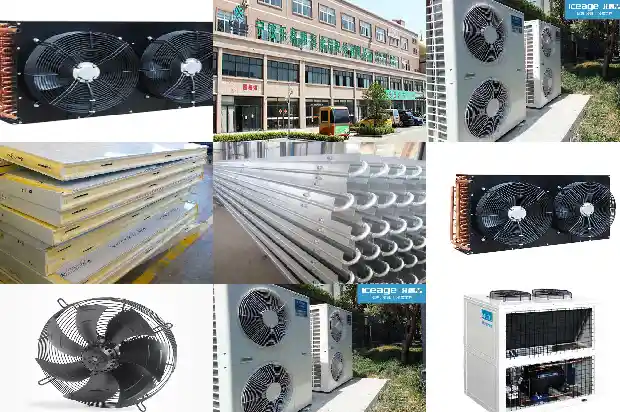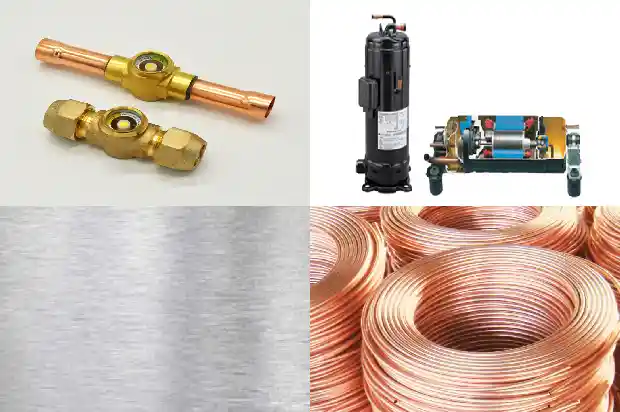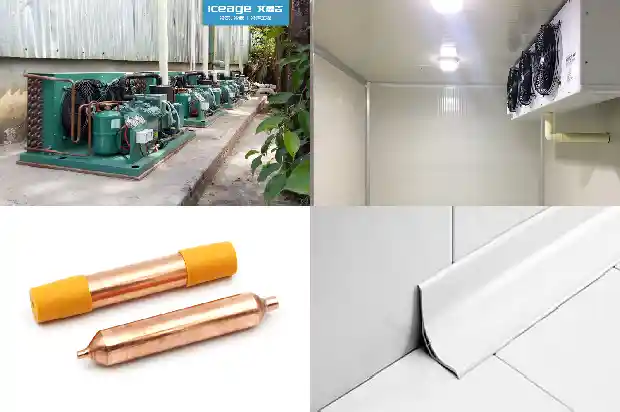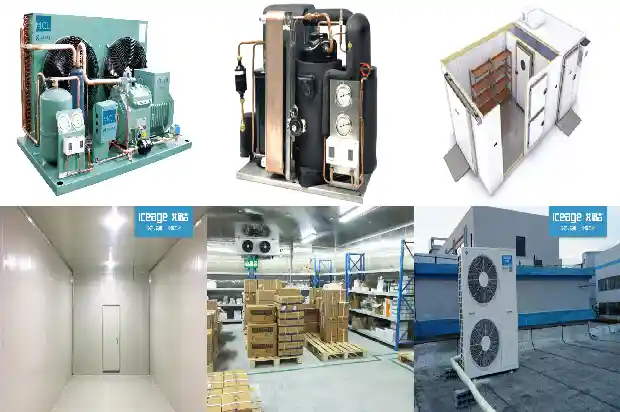Is Three - phase Electricity Necessary for a Small - scale Cold Storage (Approximately 30 Cubic Meters)?
2025-04-04
It is recommended to use three - phase electricity for installing a small - scale cold storage. The power system is also of particular importance for the safe operation of the cold storage.
If the area of the cold storage is very small (5 - 6 square meters), single - phase electricity (220V) can be used. However, it is recommended to use three - phase electricity when conditions permit. Now, let's explain the reasons in detail:
What are three - phase electricity, two - phase electricity, and single - phase electricity?
- Introduction to Three - phase Electricity
So - called three - phase electricity refers to a power source composed of three alternating currents with the same frequency, equal amplitude, and a phase difference of 120° from each other in sequence.
Three - phase electricity means "three phase lines (live wires)".
In a side - by - side generator, the angle between the three live wires is 120 degrees. There are "three - phase four - wire system" and "three - phase five - wire system", that is:
Three live wires share one neutral wire: 4 wires in total;
Three live wires share one neutral wire, plus 1 earth wire, so there are 5 wires. The main purpose of the earth wire is to prevent electric leakage.
Three - phase electricity is mainly applied in industry. For example, common electric motors operate using three - phase alternating current. - Two - phase Electricity
The power - supply circuit mode composed of two phase lines is called two - phase power supply, abbreviated as two - phase electricity.
It is a poly - phase alternating - current system in the early 20th century. The generator has two windings, and the output voltages are orthogonal (with a 90 - degree difference). The system usually has four wires, two for each phase.
- Single - phase Electricity
Single - phase electricity (Single - phase electric power) refers to the form of electric - energy transmission composed of one phase line (commonly known as the live wire) and one neutral wire. When necessary, there will be a third wire (the earth wire) to prevent electric shock.
Comparison of Three - phase, Two - phase, and Single - phase Electricity
Voltage Comparison
Single - phase electricity has a voltage of 220 volts, which is the voltage between the phase line and the neutral wire;
For two - phase electricity, the phase voltage between phase A and B or C of the phase lines is 380 volts. A common electrical appliance with this voltage is a 380 - volt welding machine.
For three - phase electricity, the inter - phase voltage between A, B, and C is 380V, and the electrical appliances are three - phase 380V motors or equipment.
Single - phase electricity has a voltage of 220 volts, which is the voltage between the phase line and the neutral wire;
For two - phase electricity, the phase voltage between phase A and B or C of the phase lines is 380 volts. A common electrical appliance with this voltage is a 380 - volt welding machine.
For three - phase electricity, the inter - phase voltage between A, B, and C is 380V, and the electrical appliances are three - phase 380V motors or equipment.
Others
Three - phase electricity requires less configuration of power - transmission equipment, which saves costs. Three - phase electricity does not need a neutral line (currents can cancel each other out), only three phase lines are needed. Two - phase electricity has a smaller power - transmission capacity and requires the configuration of four wires.
The output of three - phase electricity is stable without power oscillation. The rotors of single - phase and two - phase electricity generators will produce relatively large noise, and transformers will make noise due to magnetostriction.
Three - phase electricity requires less configuration of power - transmission equipment, which saves costs. Three - phase electricity does not need a neutral line (currents can cancel each other out), only three phase lines are needed. Two - phase electricity has a smaller power - transmission capacity and requires the configuration of four wires.
The output of three - phase electricity is stable without power oscillation. The rotors of single - phase and two - phase electricity generators will produce relatively large noise, and transformers will make noise due to magnetostriction.
After discussing the relevant knowledge of three - phase electricity, let's talk about why three - phase electricity must be used in a small - scale cold storage.
Why Use Three - Phase Electricity in a Cold Storage (Small - scale Cold Storage)?
The largest refrigeration unit that can be supported by single - phase electricity (220V) is 4P, so it is only suitable for a small - scale storage environment (such as a space of five or six square meters).
For example:
A fruit and vegetable fresh - keeping cold storage of thirty to forty square meters (with a height of 3 meters, so the volume is approximately 100 cubic meters) is equipped with a 6P unit. If it is a meat - freezing cold storage, the unit horsepower is 8P. Single - phase electricity (220V) cannot drive the cold - storage refrigeration unit.
It should be noted especially here:
Although single - phase (220V) electricity can meet the power supply of a 5 - 6 - square - meter small cold storage, due to the frequent use of the cold storage, the unit is in a high - load operating state of frequent starting, resulting in relatively high power consumption.
Conversely, using three - phase electricity can achieve efficient power transmission, reduce the energy consumption of the cold storage, and thus reduce the energy - consumption ratio of the cold storage.
The largest refrigeration unit that can be supported by single - phase electricity (220V) is 4P, so it is only suitable for a small - scale storage environment (such as a space of five or six square meters).
For example:
A fruit and vegetable fresh - keeping cold storage of thirty to forty square meters (with a height of 3 meters, so the volume is approximately 100 cubic meters) is equipped with a 6P unit. If it is a meat - freezing cold storage, the unit horsepower is 8P. Single - phase electricity (220V) cannot drive the cold - storage refrigeration unit.
It should be noted especially here:
Although single - phase (220V) electricity can meet the power supply of a 5 - 6 - square - meter small cold storage, due to the frequent use of the cold storage, the unit is in a high - load operating state of frequent starting, resulting in relatively high power consumption.
Conversely, using three - phase electricity can achieve efficient power transmission, reduce the energy consumption of the cold storage, and thus reduce the energy - consumption ratio of the cold storage.

Related Articles
- Common Faults and Treatment Methods of Single-phase Asynchronous Motors
- The Indoor Humidity Is Too High in Summer. How to Dehumidify? Can the Dehumidification Mode of the Air Conditioner Really Save Electricity and Money?
- How to Use Electricity Reasonably in Small Cold Storages?
- Comprehensive Introduction to Chilled Water Systems of Large - scale Central Air - conditioners
- How Much Do You Know About the Chilled Water System of Large - scale Central Air - conditioners?
- What issues should be noted during the installation of a small - scale cold storage?
- Three Common Methods for Removing Water Scale from Water - cooled Condensers
- Introduction to Cold Storage Refrigeration Systems
- Why should polyurethane cold - storage panels be selected for the construction of cold storages?
- Comprehensive Insights into Large - Temperature - Difference Ice - storage Air - Conditioning Systems
- How to Operate the Cold - storage Distribution Box during Cold - storage Installation
- Collection! Comprehensive Guide to Energy Saving of Refrigeration Systems - Cold Storage System Edition
- What Should Be Done When These Problems Occur in the Semi-hermetic Piston Compressor of the Cold Storage?
- Analysis of Common Malfunctions and Treatment Methods of Cold Storage Equipment
- What Are the Daily Maintenance Methods for Controlled Atmosphere Cold Storage Equipment?
- What are the Differences between Controlled Atmosphere Cold Storage Technology and Traditional Cold Storage Technology?
- Common Faults and Solutions in Cold Storage Maintenance
- Analysis of Classification, Differences, Advantages and Disadvantages of Cold Storage Refrigeration Compressors
